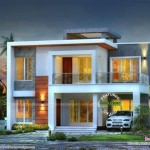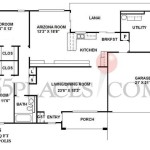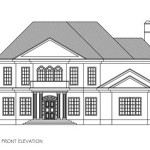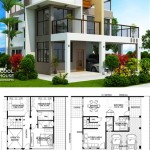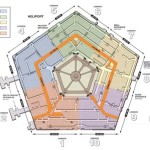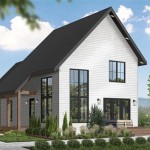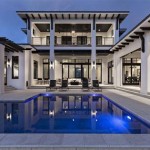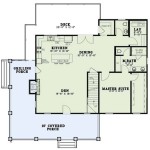House Plans With Separate In-Law Quarters: A Comprehensive Guide
Many modern families are discovering the benefits of multi-generational living. As the cost of assisted living facilities increases and families seek closer connections, housing solutions that accommodate multiple generations under one roof are becoming increasingly popular. House plans with separate in-law quarters, also known as accessory dwelling units (ADUs) or granny flats, offer an ideal solution. These plans allow for independent living spaces within the same property, providing privacy and autonomy for all residents while fostering family proximity and shared resources.
These types of house plans are not just relevant for families with aging parents. They can also be suitable for adult children returning home, individuals needing caretaker support, or even as a rental income opportunity. Understanding the various design considerations, legal ramifications, and potential benefits is crucial when exploring house plans with separate in-law quarters.
Key Point 1: Understanding the Different Types of In-Law Suite Designs
In-law suites can take several forms, each offering unique advantages based on space, budget, and occupant needs. The primary distinction lies in the level of separation and integration with the main house.
Attached In-Law Suites: These are the most common type, typically connected to the main house by a shared wall or hallway. They often have a private entrance, a separate living area, a kitchenette or full kitchen, a bedroom, and a bathroom. The degree of separation can vary; some attached suites might have a lockable interior door, effectively isolating the space entirely, while others might have a more open flow.
The attached design allows for easy access between the main house and the in-law suite, which can be beneficial for families who want to maintain close interaction. It can also be more cost-effective to build since it utilizes existing utilities and shares a common roofline. However, depending on the design, noise transmission can be a concern, and achieving complete privacy might require careful planning.
Detached In-Law Suites: These are separate, self-contained units located on the same property as the main house. They can be constructed as a stand-alone cottage, a converted garage, or a space above a detached garage. Detached suites offer the highest level of privacy and independence. They typically include all the amenities of a small house: a living area, a full kitchen, a bedroom, and a bathroom.
The detached design is ideal for families who value privacy and want to minimize potential disruptions. It can also be easier to rent out as a standalone unit if desired, subject to local zoning regulations. However, detached suites are generally more expensive to build due to the need for separate utilities, foundation, and roofing. They also require more land space.
Basement In-Law Suites: Converting a basement into an in-law suite can be a cost-effective option, especially if the basement is already partially finished. This involves adding features such as a separate entrance (often through an egress window or walk-out door), a living area, a kitchenette or full kitchen, a bedroom, and a bathroom. Proper insulation, ventilation, and moisture control are crucial for basement suites to ensure comfortable living conditions.
Basement suites can be a good solution for maximizing space within an existing footprint. However, they might not offer as much natural light or privacy as other options. Issues with dampness and accessibility (especially for individuals with mobility limitations) need to be carefully addressed during the design and construction process.
Above-Garage In-Law Suites: Utilizing the space above a detached garage can be an efficient way to create an in-law suite, particularly if garage space is already established. This design offers a degree of separation while still being connected to the main property. Access is usually provided by an exterior staircase. Considerations include structural integrity, soundproofing, and ensuring adequate insulation for comfortable living.
Each of these design variations presents its own set of advantages and challenges. Careful consideration of family needs, budget constraints, and local building codes is essential when selecting the most appropriate type of in-law suite.
Key Point 2: Essential Design Considerations for Functional and Comfortable Living
Beyond the general layout, several specific design elements contribute to the functionality and comfort of an in-law suite. These considerations are crucial for creating a space that meets the needs of its occupants and integrates seamlessly with the main house.
Accessibility: Accessibility is a paramount consideration, especially for elderly occupants or individuals with mobility limitations. Universal design principles should be incorporated to ensure ease of use and safety. This includes features such as wider doorways and hallways to accommodate wheelchairs or walkers, grab bars in bathrooms, roll-in showers, lever-handled door hardware, and ramps or elevators instead of stairs. Contrasting colors can also assist individuals with visual impairments.
Privacy: Maintaining privacy is vital for both the occupants of the in-law suite and the main house. Soundproofing walls and floors can minimize noise transmission. Strategic placement of windows and doors can prevent direct sightlines between living spaces. Separate entrances and outdoor areas contribute to a sense of independence.
Kitchen and Bathroom Design: The kitchen and bathroom are critical areas in an in-law suite. The kitchen should be designed to be functional and efficient, with adequate counter space, storage, and appliances. Consider incorporating adjustable-height countertops or pull-down shelving for increased accessibility. The bathroom should be designed with safety and comfort in mind. Non-slip flooring, grab bars, and a walk-in shower or tub are essential features.
Storage: Adequate storage is often overlooked but is crucial for comfortable living. Built-in storage solutions, such as closets, shelves, and cabinets, can help maximize space and minimize clutter. Consider vertical storage options to utilize wall space effectively.
Lighting: Natural light is essential for creating a bright and welcoming living space. Maximize natural light by incorporating large windows and skylights. Supplement natural light with strategically placed artificial lighting, including task lighting, ambient lighting, and accent lighting. Use energy-efficient LED bulbs to reduce energy consumption and provide long-lasting illumination.
Climate Control: Separate climate control systems allow the occupants of the in-law suite to adjust the temperature to their comfort level without affecting the main house. This can be achieved through separate thermostats for heating and cooling systems or by installing a mini-split system for independent climate control.
Emergency Systems: Safety is of utmost importance. Ensure that the in-law suite is equipped with appropriate emergency systems, including smoke detectors, carbon monoxide detectors, and fire extinguishers. Consider installing a medical alert system for elderly or disabled occupants.
Outdoor Space: Access to outdoor space can significantly enhance the quality of life for in-law suite occupants. A private patio, deck, or garden area provides a place to relax, socialize, and enjoy the outdoors.
Key Point 3: Legal Considerations and Zoning Regulations
Before embarking on a project involving an in-law suite, it is imperative to understand the local zoning regulations and building codes. These regulations vary significantly from one municipality to another and can impact the feasibility and design of the unit.
Zoning Regulations: Zoning regulations dictate the permitted land uses, building sizes, and setbacks in a particular area. Many municipalities have specific regulations regarding accessory dwelling units (ADUs), including in-law suites. These regulations might specify the maximum size of the ADU, the number of occupants allowed, parking requirements, and setbacks from property lines. Some jurisdictions may even prohibit ADUs altogether.
It is crucial to research the local zoning regulations thoroughly to determine whether an in-law suite is permitted on the property and what restrictions apply. Contacting the local planning department or building department is the best way to obtain accurate information.
Building Codes: Building codes establish minimum standards for the design, construction, and safety of buildings. These codes cover various aspects of construction, including structural integrity, fire safety, electrical systems, plumbing systems, and accessibility. An in-law suite must comply with all applicable building codes to ensure the safety and well-being of its occupants.
Obtaining the necessary building permits is essential before starting any construction work. Building permits ensure that the project meets the requirements of the building codes and that inspections are conducted throughout the construction process.
Property Taxes: Adding an in-law suite to a property can increase its assessed value and result in higher property taxes. The amount of the increase will depend on the size and features of the suite and the local tax assessment practices. It's important to factor in potential tax implications when considering an in-law suite.
Deed Restrictions and Homeowners Association (HOA) Rules: In addition to zoning regulations and building codes, deed restrictions and HOA rules can also affect the construction of an in-law suite. Deed restrictions are private agreements that restrict the use of property. HOA rules are regulations established by a homeowners association. These restrictions might prohibit ADUs or impose specific requirements on their design and construction. Reviewing deed restrictions and HOA rules before starting a project is essential to avoid potential conflicts.
Rental Restrictions: If there are plans to rent out the in-law suite, it is critical to understand the local regulations regarding rental properties. Some municipalities require rental properties to be licensed or inspected. There might also be restrictions on the number of tenants allowed or the types of rentals permitted (e.g., short-term rentals versus long-term rentals).
Navigating the legal and regulatory landscape can be complex. Consulting with an attorney or a qualified zoning consultant can help ensure compliance with all applicable regulations and avoid potential legal issues. Failure to comply with zoning regulations or building codes can result in fines, stop-work orders, or even the removal of the in-law suite.

Find The Perfect In Law Suite Our Best House Plans Dfd Blog

House Plans With In Law Suites Houseplans Blog Com

House Plans With In Law Suite Floor Designs

Find The Perfect In Law Suite Our Best House Plans Dfd Blog

House Plans With In Law Suites Houseplans Blog Com

Pin On Dream Home

Southern Style House Plan With In Law Suite

One Story With In Law Suite Plan 2286

Front Side View House Plans With A Separate In Law Suite

Modern Farmhouse Plan With In Law Suite 70607mk Architectural Designs House Plans

